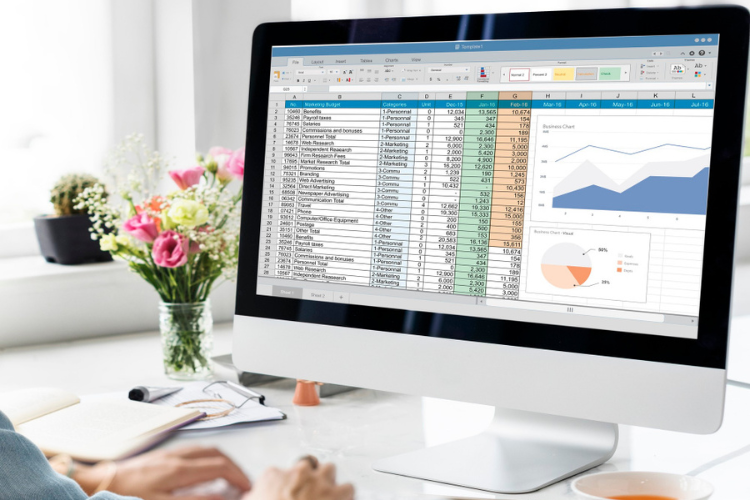Table Of Contents
Top Benefits Of CDP For Retail Marketers
Last Updated on: August 5th, 2025
Retail has changed a lot. These days, customers shop everywhere—apps, websites, social media, and even pop into stores.
Trying to keep up with what they do and want can feel like a full-time job. That’s where customer data platforms, or CDPs for Retail Marketers, come in. They make things a whole lot easier.
Top Benefits Of CDPs For Retail Marketers
If you work in retail marketing, here’s how CDPs for Retail Marketers help you get better at using data, personalizing offers, and running campaigns that work.
1. All Your Data In One Place
Customer data often sits in different systems. You’ve got order history in one spot, website clicks in another, and support chats somewhere else.
A CDP for retail pulls all of that together. You get one clear view of each customer, which means less guesswork and more action.
With a CDP, you can:
- Collect data from different channels
- Automatically clean it up and organise it
- Build live customer profiles that update as people shop
- Share that data across your marketing tools
2. Better Personalization That Feels Real
People want brands to speak to them, not at them. A CDP helps you understand what shoppers look at, buy, and care about. That means you can send them offers and messages that feel relevant.
Instead of sending the same promo to everyone, you can create groups like:
- New shoppers vs. loyal customers
- People who love a certain product line
- Customers who filled a cart but didn’t check out
3. Live Updates Mean You Can Act Fast
In retail, timing’s everything. CDPs for Retail Marketers update customer profiles in real time. If someone clicks on a product, browses a new collection, or finishes a purchase, you’ll know straightaway. That lets you respond fast.
You can launch a limited-time offer for people who just browsed a product, stop a promo for someone who already bought, or tweak your messaging based on what they’re doing right now.
4. Seamless Across Channels
Customers might start shopping on your site, message support through chat, and then walk into your store. A CDP connects all these dots. Every touchpoint gets added to the same customer profile.
This helps you deliver smoother, more consistent messaging across email, apps, and even in-store. Customers won’t feel like they’re talking to three different brands. Instead, everything feels linked, and that builds trust.
5. Campaigns Run Smoother
Are you interested in finding out which offers attract repeat buyers? Or which product pages lead to the most conversions? The insights are right there.
You don’t need to wait for long reports or go digging through spreadsheets. You get answers quickly, so you can adjust your strategy on the fly and improve results without wasting time or money.
6. Helps With Privacy And Compliance
Keeping customer data safe and following privacy laws is a must. A CDP helps by keeping all that information in one secure place.
You can easily update, remove, or export a customer’s details if needed. It’s cleaner, simpler, and shows your customers you take their privacy seriously, which can only help your brand reputation.
7. Easy To Scale As You Grow
When your business grows, so does your data. The good news? CDPs are built to handle that. Whether you’ve got 1,000 customers or a few million, a CDP keeps your data running smoothly.
Expanding into new locations or launching new product lines? No problem. The platform grows with you, so you don’t have to keep switching tools as things get bigger.
CDP Vs CRM: What Is The Difference?
Customer data management is the focal point of designing frictionless, personalized experiences in today’s business in the digital-first world.
Two of the most influential tools employed in this battle are Customer Data Platforms (CDPs) and Customer Relationship Management (CRM) systems.
Although both platforms may appear to be the same on the surface, their purpose, capability, and result are very different.
It is important to know how a CDP and CRM are different if companies wish to automate, release customer behavioral insight, and drive engagement.
1. Purpose And Focus
- CDP: Customer Data Unification & Activation
A Customer Data Platform (CDP) is created to unify, unite, and activate customer data from various sources.
It is created to empower an integrated, up-to-date customer profile that can be leveraged by several teams, such as marketing, analytics, customer service, and more.
Its overall function is to create a 360-degree customer view by merging online and offline sources of data.
- CDPs are marketer-friendly and are meant for cross-channel personalization.
- Their function is to facilitate real-time segmentation and activation of rolled-up customer data.
- CRM: Direct Customer Relationship Management
A Customer Relationship Management (CRM) system is designed to manage direct relationships with actual and potential customers, normally in sales, support, and service environments.
CRMs assist sales reps in following up leads, managing pipelines, and coordinating communications.
- CRMs are customer-facing, with emphasis on capturing customer interactions and tracking the sales pipeline.
- They’re most commonly employed to tighten business relationships and close deals.
2. Data Collection And Unification
- CDP: Complete, Cross-Channel Data Unification
A CDP takes in first-party, second-party, and third-party data from multiple channels—web, mobile app, CRM, social media, point-of-sale terminals, email, etc.—and unifies them into a single customer record.
- Gathers behavioral, transactional, demographic, and engagement data.
- Takes into account anonymous and known user data.
- Develops a persistent, single customer database for consumption by other applications.
- CRM: Only Interaction And Transactional Data
CRMs store data manually or directly, i.e., contact forms, email, and support requests.
- Only keeps track of known customers and prospects.
- Generally, only sales and service history.
- Not designed to consume anonymous or behavioral data.
3. Scope Of Information
- CDP: Broad And Holistic
- Monitoring of behavior (email, mobile, web).
- Browsing and purchasing history.
- Channel selection and response to campaigns.
- Use of devices, location, and time.
- Data for anonymous users that, in the future, will be able to be identified.
- CRM: Niche And Transactional
- Contact information (name, e-mail, phone number).
- Sales call and meeting notes.
- Deal status, pipeline activity, and account history.
- Support interactions (tickets, issues, follow-ups).
How Do You Choose The Best CDP?
Choosing a CDP is not about features—it’s about fit to your tech stack, team, and goals. Consider the following crucial questions for yourself:
1. Is This CDP Easy To Implement?
Setup is the greatest obstacle for most teams. Ask yourself:
- Time to deploy: How long will it take to onboard data sources and go live?
- Technical support: Is onboarding support offered by the vendor?
- User interface: Is it easy for marketers and analysts to use?
Tip: Opt for CDPs with pre-built APIs, templates, and connectors to speed up deployment.
2. Does This CDP Easily Integrate With Our Data Sources?
Your CDP must integrate with:
- CRMs, ERPs, and POS systems
- Web and mobile analytics platforms
- Email marketing tools
- Ad networks and DMPs
Smooth integration is necessary to enable a true single customer view and activation in real-time.
3. How Does This CDP Handle Identity?
Identity resolution is the superpower core of a good CDP.
Avoid:
- Deterministic and probabilistic matching between devices.
- Identity stitching for allowing anonymous-to-known conversions.
- Cross-channel identification, one profile per customer.
Without strong identity resolution, your CDP is nothing but just another data warehouse.
4. Is This CDP Good For Customer Privacy?
With GDPR, CCPA, and HIPAA regulations, your CDP needs to be sensitive to:
- Data encryption and security
- Consent management software
- Right-to-access and right-to-forget compliance
- Privacy dashboards and audit trails
Privacy-first CDPs will enable compliant marketing without compromising personalization.
5. Does This CDP Easily Connect To Our Engagement Platforms?
The wizardry of a CDP is activation. Your selected CDP needs to:
- Integrate seamlessly with email, SMS, push, ad networks, and customer service platforms
- Accommodate real-time triggers and campaigns
- Provide AI-based recommendations and segmentation
Omnichannel activation ensures your customer has a consistent touchpoint experience.
Retail That Works Smarter, Not Harder
Success in retail comes down to knowing your customers and responding quickly. CDPs for Retail Marketers help you do both.
It takes messy, spread-out data and turns it into real insights, smart campaigns, and better customer experiences. A CDP is one of the best tools for improving customer targeting and connection.
Read Also:















